World War II was the first mechanized mass conflict. But, for all the advances in vehicular travel, tank warfare, and fighter plane maneuverability, one American unit stood out above all the rest.
They had the most unusual of tasks. So strange and so secret, in fact, that the true extent of their job wasn’t made public knowledge until 1985 and wasn’t declassified until 1996.
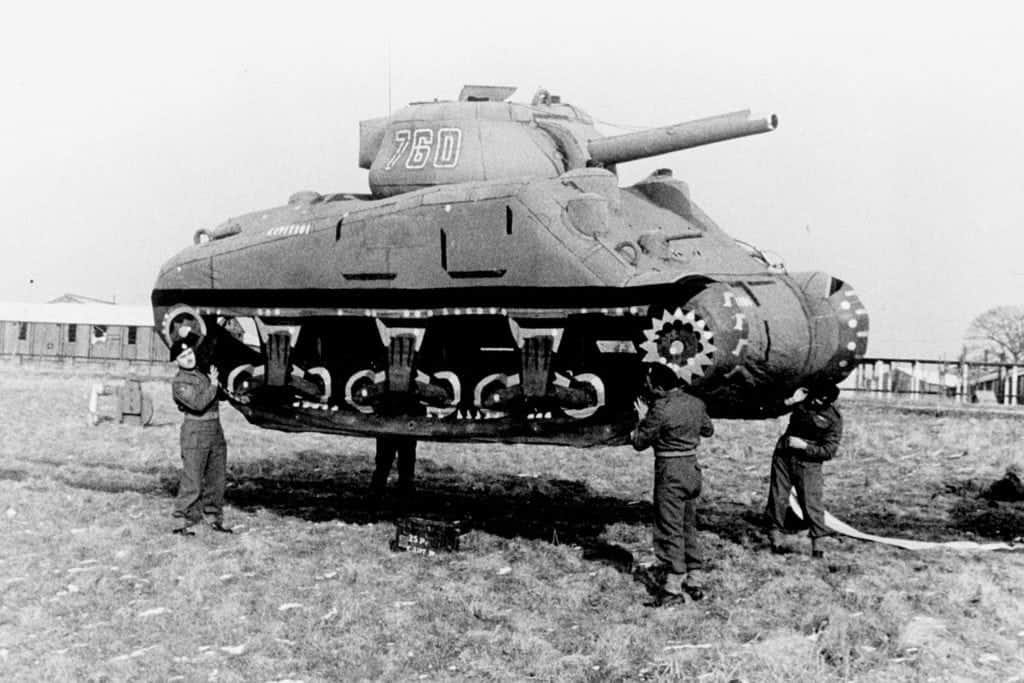

Its colloquial name was Ghost Army, and every single one of its vehicles, units, and strategic movements was fictional.
More akin to Hollywood set designers than a full-blown military unit, this crackpot team’s fake invasion force played a vital part in the success of D-Day, bringing the war to a swifter close.
The Origins Of Ghost Army
It all started in January 1944. London-based US Army planners Colonel Billy Harris and Major Ralph Ingersoll cast their minds back to Operation Bertram, a British deception operation in the now-victorious North Africa conflict, and had a brainwave.
Bertram, masterminded by the eccentric Brigadier Dudley Clarke, assisted in the 1942 Battle of El Alamein. Dummy models concealed and misrepresented tank and truck movements. These were supported by radio messages backing up the fictitious actions.
Bertram was so outrageous that it worked, prompting a (temporary) British advance. There was no doubt about it: deception was a powerful tool.
Harris and Ingersoll realized they could implement the same deception techniques to mask the intended D-Day invasion targets. It was time to act.
The unit’s official designation would be the 23rd Headquarters Special Troops, known as the 23rd. It would pose as the fictitious First US Army Group (FUSAG), seeking to make the enemy believe its numbers were far stronger.
The barracks were in Tennessee, and a group of 1,023 men, plus 82 officers, was soon drawn up. These actors, artists, engineers, lawyers, and architects were split into the 406th Combat Engineers, the 603rd Camouflage Engineers, and the 3132nd Signal Service Company Special.
In May 1944, a month before the Normandy invasion, the 23rd traveled to Britain and set up shop in the southeast.
They were ready.
Ghost Army And Operation Fortitude
The 23rd would employ their skills as part of Operation Fortitude. This British-led operation was tasked with misleading the enemy. Their objective was to make them divert their defensive forces away from Normandy.
Specifically, the 23rd would work as part of Fortitude South. Their task was to make the Germans believe that Allied forces would invade Pas-de-Calais, about 370 km (230 miles) away from the true targets in Normandy.
And how would they do this? By creating an utterly fake invasion force, of course.
In Kent (Britain’s southeast county), the 23rd began working under cover of darkness. This earned them the well-known nickname, ‘Ghost Army’; mysterious individuals emerging like ‘phantoms’ in the night, their actions completed long before the approach of dawn.
Ghost Army, as it quickly became known, used strategies similar to those of the British at El Alamein. But they took it to a whole new level. Inflatable tanks, fake transmissions, and ear-splitting audio recordings were strategically implemented for maximum deception.
The following day, German aerial reconnaissance would photograph the scenes on the ground. Nazi planners would then report the apparent ‘troop movements’ to their superiors. Perhaps the Allies were going to invade Pas-de-Calais after all?
The props were ready. The scene was set. And the actors were in play.
The Inflatable Tanks Of World War II
By now, the infamous inflatable tanks of World War II are written in folklore – and rightly so.
Built with a wooden frame, painted, and inflated or deflated using generators at night, these Ghost Army-produced masterpieces played a critical part in deceiving Hitler’s defending forces on mainland Europe.
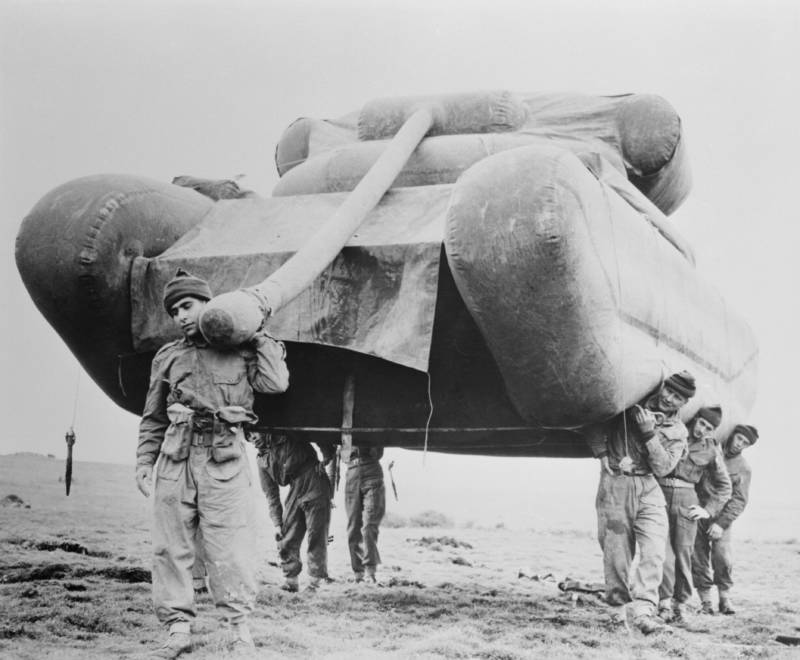
But tanks weren’t the only things that Ghost Army ‘built’. The fake invasion force also comprised aircraft, jeeps, trucks, and cannons.
Artists meticulously produced inflatable or wooden models that appeared realistic from the air, including callsigns, markings, and material textures.
Each would be strategically moved at night and ‘camouflaged’ during the day – just poorly enough that German aerial reconnaissance would see it.
The Ghost Army members responsible for this part of the deception hailed from the 603rd Camouflage Engineers. Most of the men were recruited from New York and Philadelphia art schools.
Alongside the many fake inflatable vehicles, Ghost Army had a few real ones. They could drive these around realistically. It was yet another indication that the unit posed a real threat and another nail in the Nazis’ coffin.
Ghost Army And Radio Transmissions
Sending fake radio transmissions and Morse code is relatively easy. Anyone can do it. But making it believable? And convincing the enemy that the transmission is genuine and worth adjusting their strategy to account for. Now, that’s tricky.
In fact, it was thought to be impossible.
But not for Ghost Army’s 3132nd Signal Service Company Special.
The dedicated radio operators didn’t only exchange completely made-up messages. They also spent time developing nuances and individual styles. This gave the messages personality, further convincing the Germans of their authenticity.
Hitler was sure the Allies would attack at Calais. How wrong he was.
‘Atmosphere’ Deception
Booming across the cliffs and hills of Kent came the overwhelming noise of a busy military camp. It, too, was make-believe, stemming not from troop movements but loudspeakers.
In some instances, the noise caused by these could be heard in villages 15 miles away, where it was hoped enemy spies would report the hullabaloo.
This had always been part of the plan. Before leaving for Britain, engineers from the 3132nd used wire recorders to record audio from troop movements at Fort Knox. They brought these records over the ocean.
When the time came, they mixed the sounds according to the intended bogus situations before blaring them over powerful amplifiers.
And that wasn’t all. Ghost Army also produced fake uniforms and showcased in ‘military police’ at crossroads. Crucially, they plastered various insignia of different units all over vehicles and equipment.
Some unit members dressed up as generals and sauntered into the nearby towns. Of course, in normal circumstances, this was a punishable offense. However, they hoped spies would notice, reinforcing the story of battalions of troops ready to invade Pas-de-Calais.
Collectively, these small deceptive techniques were called “atmosphere”. And creating a fake ‘atmosphere’ made the lie much more believable.
How Effective Was Ghost Army In Operation Fortitude?
June 6, 1944, came around. D-Day. Judgment day.
Allied troops nervously filed into their respective ships, bracing for the inevitable firefight. Had Operation Fortitude worked? Because if it hadn’t, they were all heading into a massacre.
As it turned out, Fortitude was even more successful than anyone had imagined. And it owed a large part of that success to Ghost Army.

On D-Day, reports of the Allied invasion trickled in. Some in the German high command – including Hitler – believed the invasion was a farce. They would hold out and wait for the actual attack in Pas-de-Calais. Or, more likely, generals were too afraid of Hitler to make their voices heard.
Even a month after D-Day, some Nazi officials still expected a second invasion wave to land at Calais.
That meant the Germans kept their forces in strategic defensive positions, waiting for an attack that would never come. As a result, these troops never reinforced the areas targeted by the Allies.
By the time the Nazis acknowledged what was happening and that the army stationed in the southeast was nothing more than a ploy, it was too late.
Overwhelming numbers and the combination of fresh troops and battle-hardened soldiers meant the Allies began a cautious yet almost unstoppable steamroll toward Berlin.
Ghost Army Wasn’t Done Yet
Most people wrongly think that after D-Day, Ghost Army packed up and embarked on the long trip back to Tennessee. That couldn’t be further from the truth. And 22 successful missions – of which the D-Day deceptions and Fortitude were just one – proved it.
In fact, four men joined in the D-Day landings themselves. Two weeks later, another 17 headed to Normandy to build fake artillery positions and create a fake Mulberry harbor.
These were temporary docks, allowing ships to offload in haste. Simulating these positions – especially lights at night – drew enemy fire away from the real ones.
The rest of Ghost Army caught up not long later. They moved with Allied troops, implementing dummy forces to distract German defenders wherever necessary. Notably, this included positions around Brest and crossing the Rhine River.
Over time, they also became close with General George Patton and his Third Army. He was known for his outright support for the unit.
After VE Day, Ghost Army would return home in May 1945, their job well and truly done. On occasion, they had been so successful that the Nazis thought the 1,100-strong unit was made up of 40,000 troops split into two divisions.
Over their year in action, the unit lost three men killed in action, with another 30 injured. Military estimates conclude they probably saved between 15,000 and 30,000 lives.
Eventually, in 2022, Biden signed the Ghost Army Congressional Gold Medal Act, which led to medals for a few of the unit’s surviving members in 2024.
It seems an underwhelming recognition for such an imperative part of the fight to free Europe from Nazi tyranny.
Sources
https://ghostarmy.com/bio/f/Inside_the_23rd/413
https://ghostarmy.org/about/the-3133rd-signal-service-comany


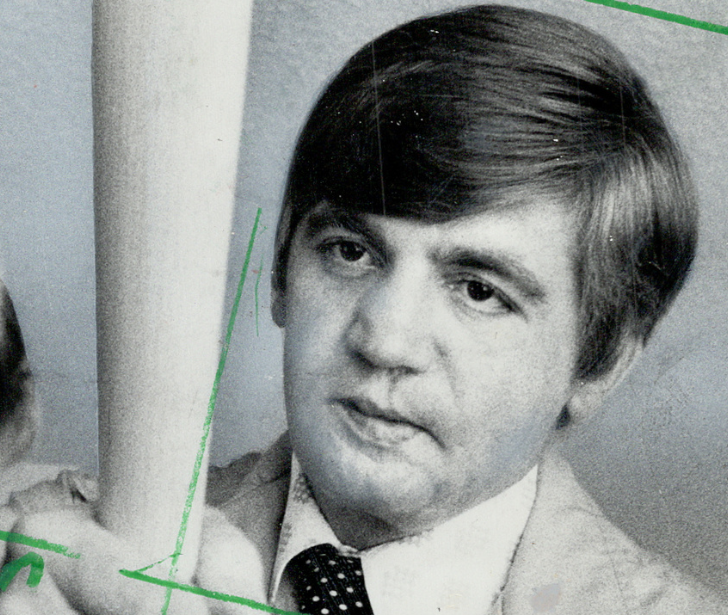







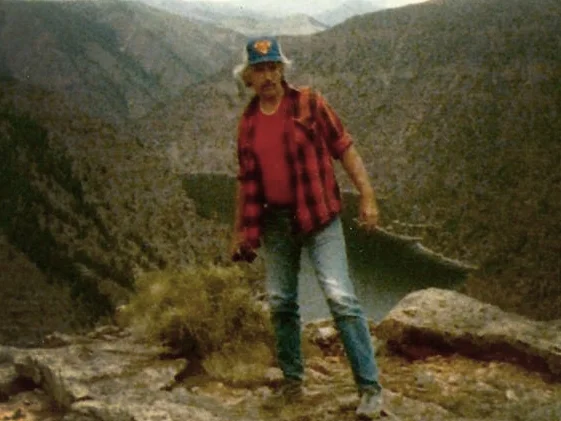
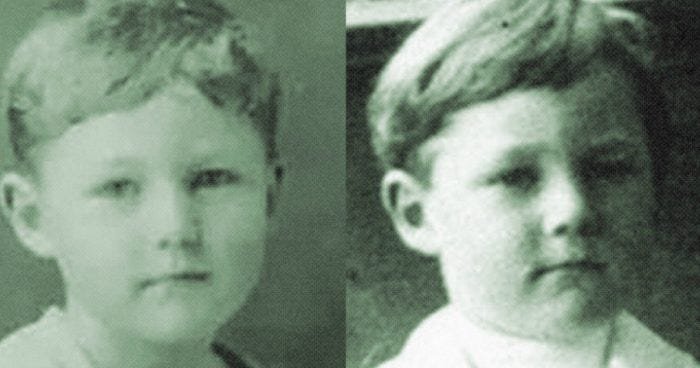

Leave a comment